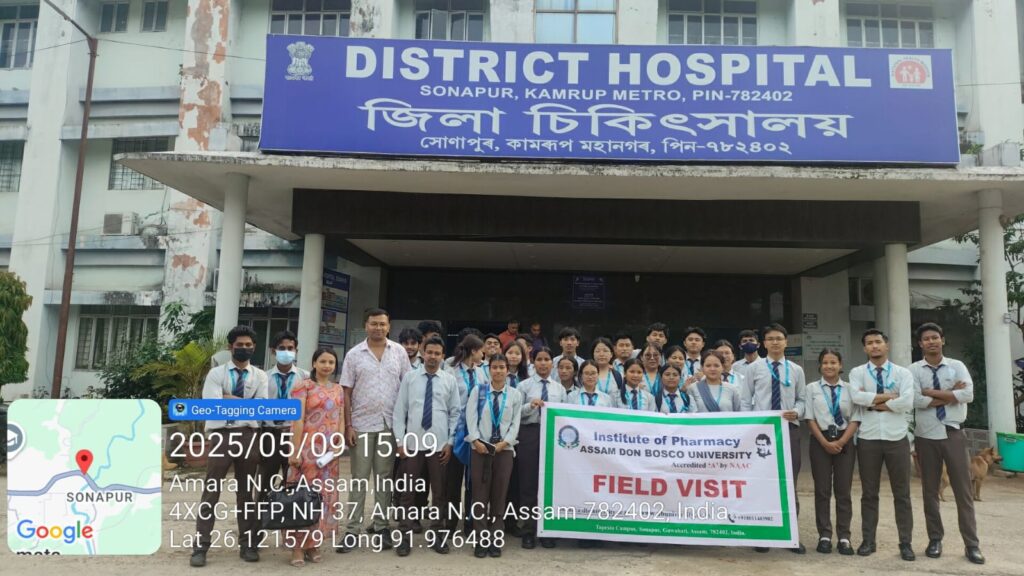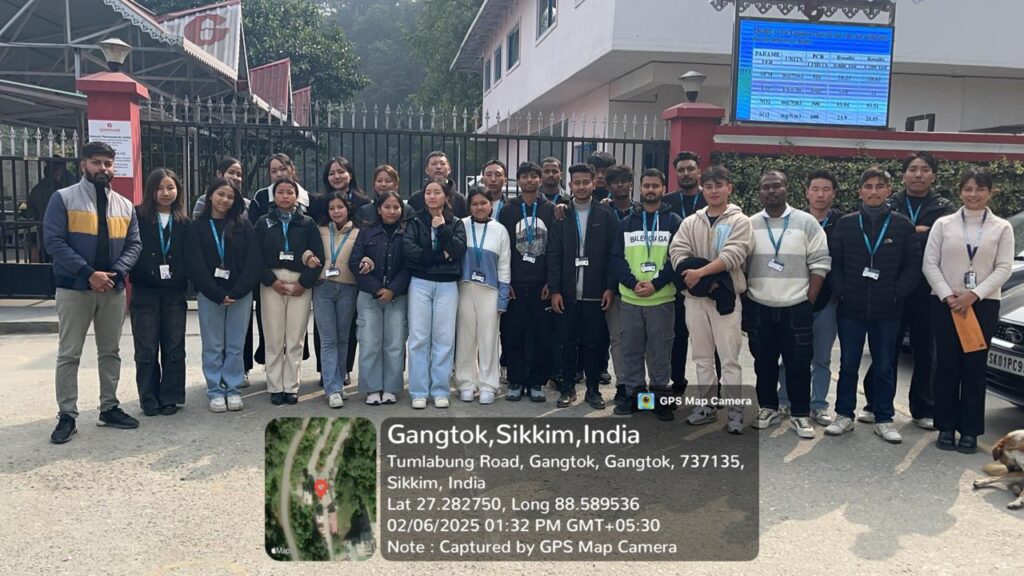A group of first-year Diploma in Pharmacy students recently visited Sonapur District Hospital in Kamrup Metropolitan, Assam, as part of their Social Pharmacy curriculum. The educational visit aimed to provide budding pharmacists with a closer look at how pharmaceutical services function within a government healthcare setting and to highlight the crucial role pharmacists play in community health.
Upon arrival, the students were warmly received by hospital staff and welcomed by the Medical Superintendent. Recognizing the academic value of the visit, the Superintendent assigned Mr. Dibyajyoti Das, a registered pharmacist, to guide the group through the hospital’s pharmaceutical departments.
During the tour, students were given a detailed overview of pharmacy operations, including the handling of prescriptions from both the Outpatient and Inpatient Departments. Mr. Das demonstrated the process of medicine dispensing, focusing on proper labeling, storage, and patient counseling.
The group also gained insight into the drug storage and inventory management systems in place at the hospital. Emphasis was placed on temperature control, stock rotation practices, and the use of both manual and digital tools to track medicine availability and prevent shortages.
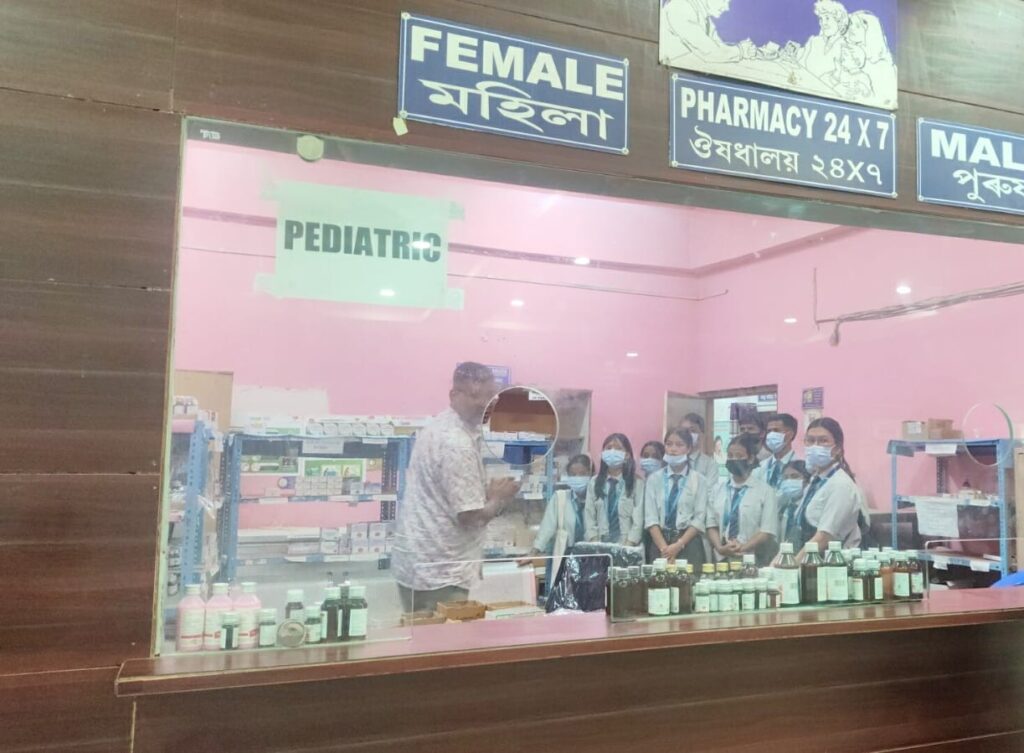
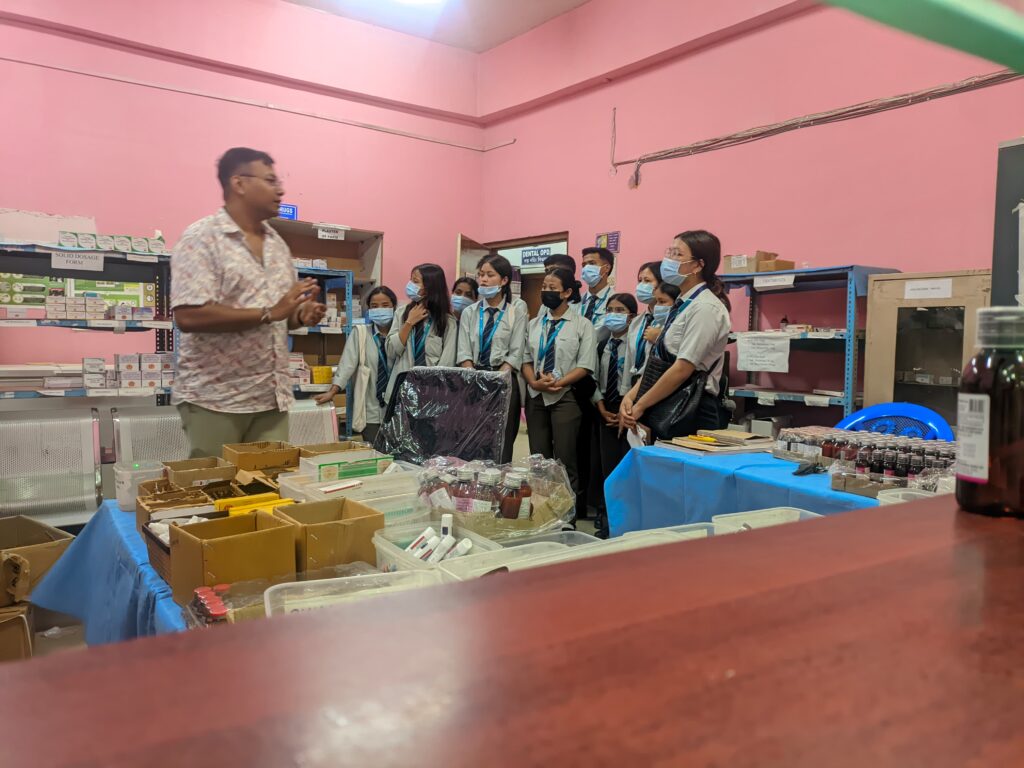
One of the key takeaways from the visit was the evolving role of the pharmacist in modern healthcare. Mr. Das explained how pharmacists contribute not just to dispensing medicines, but also to patient safety, medication education, and public health initiatives such as vaccination drives and awareness programs.
Students left the hospital with a deeper appreciation of the responsibilities shouldered by pharmacists in the public health sector. “The visit was an eye-opener for many of us. It gave us a real-world understanding of how pharmacies function in government hospitals and the importance of our future roles,” said one of the student participants.
The visit underscored the essential role of pharmacists in ensuring the safe and effective use of medications, as well as their critical contribution to patient care and public health outreach. It served as a valuable learning experience and a practical extension of the classroom curriculum.
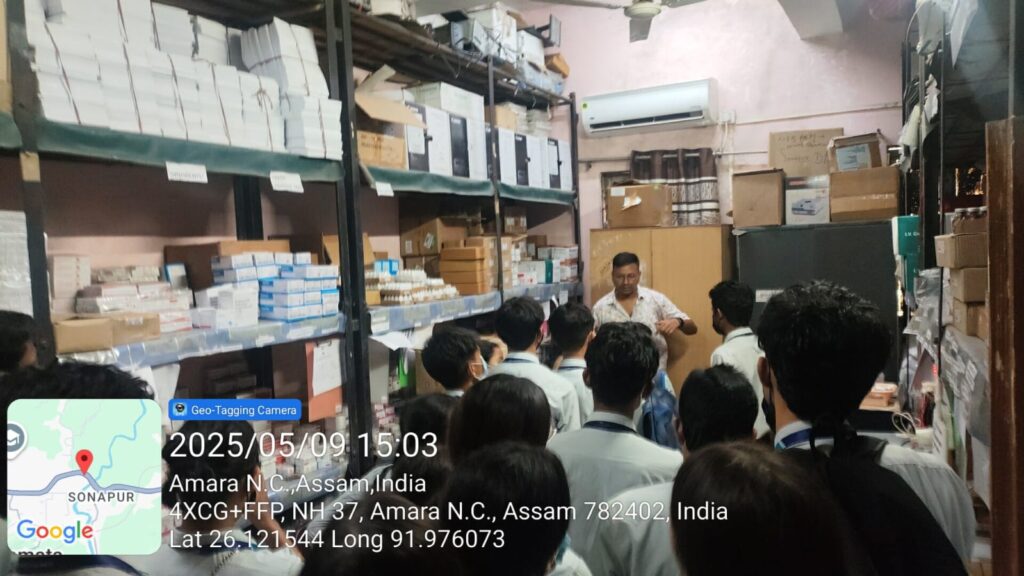
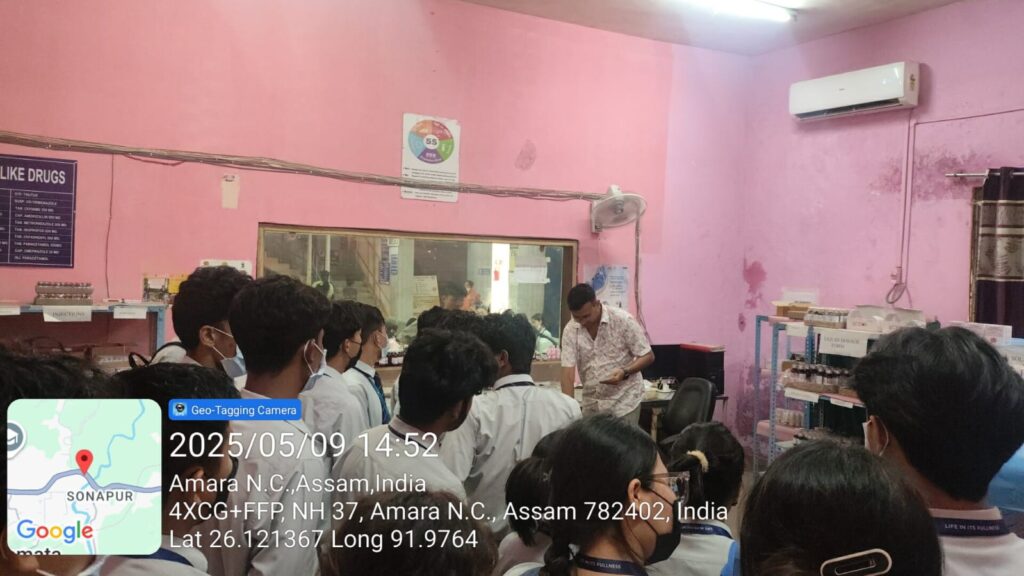
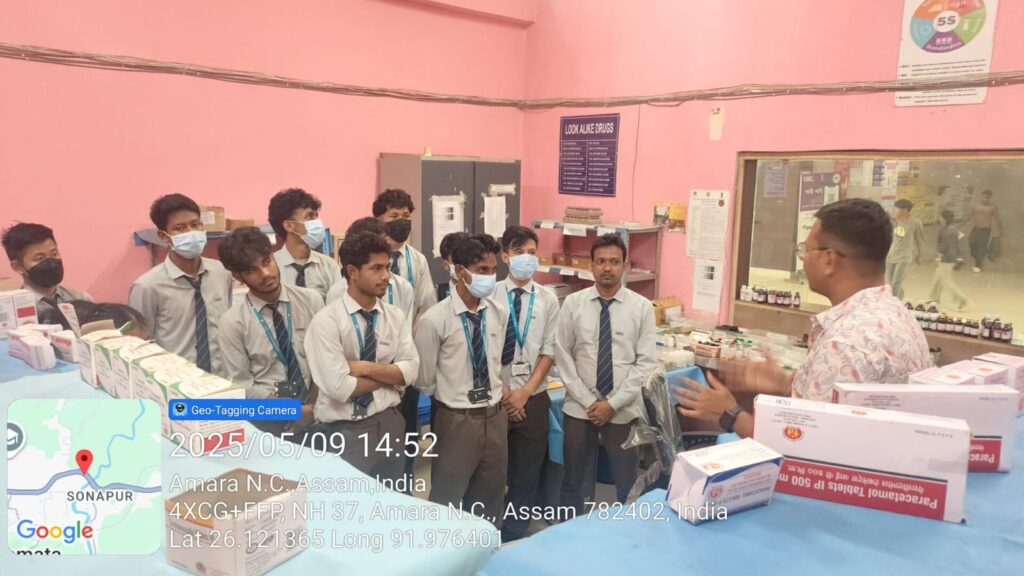
The field visit enabled students to gain practical knowledge about the functioning of a hospital pharmacy, including medicine storage, dispensing, and the pharmacist’s role in patient care. It helped bridge the gap between theoretical concepts and real-life applications, enhancing their understanding of hospital and clinical pharmacy practices.

